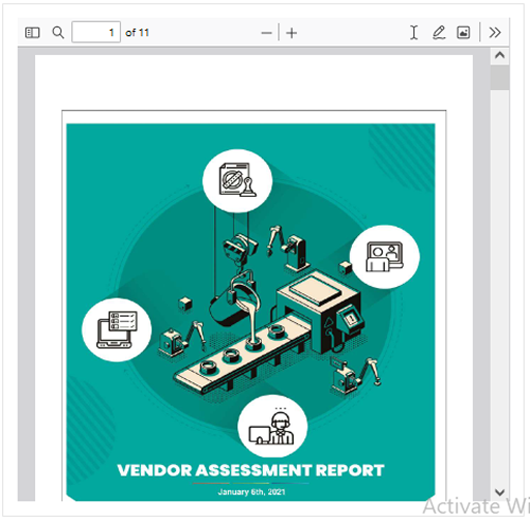gem vendor assessment
- 1 GeM Experts in India
- Money-Back Assurety
- 100% Satisfaction Guaranteed
- Free Expert Assistance for Lifetime
![]() Google Customer Rating
Google Customer Rating
4.9
Get Free Consultation
QCI Vendor Assessment on GeM Portal - Process, Documents, Fees
After GeM registration, a seller needs to set up an OEM to claim the ownership of products and services they want to sell. Sellers are required to apply for Vendor Assessment on GeM to evaluate the credentials and quality standards. QCI carries out Vendor Assessment of OEM on GeM Portal.
Once the OEM Panel is set up, sellers can list their brand on the GeM portal. After brand listing, they can list their products/services under appropriate categories and participate in bids. The Vendor Assessment is carried out in two stages - Desktop Assessment and Video Assessment. We’ll explain Vendor Assessment for GeM in more detail but first, let’s get on the same page.

What is Vendor Assessment on GeM?
A Vendor Assessment is performed to determine the quality of a product or service. Pre-assessed Vendors are tagged as VA in front of their names at GeM Marketplace and hence the confidence of prospective buyers grows manifold when they are aware they are transacting with Sellers whose credentials are already verified and authenticated.
At present, Vendor Assessment is done by the Quality Council of India (QCI). The QCI Vendor Assessment is done online, and the fee has to be paid directly to QCI. It is an important step for evaluating the credentials and quality standards of the seller. After Video Assessment, the seller gets the OEM Panel or OEM certificate in GeM.
Who can apply for Vendor Assessment on GeM?

Vendor Assessment is mandatory for sellers who want to participate in the public procurement of Q1 and Q2 category products on GeM.
Original Equipment Manufacturers (OEM) can apply for Vendor Assessment if they are:
- Manufacturing Unit
- Assembling Unit
- Third-Party manufacturer with or without Brand Name
If the products are manufactured outside India, and that location does not share a land border with India, then the manufacturing entity should become a Deemed OEM on GeM.
It is important to note that manufacturers outside India can also become OEM on the GeM portal. However, they have to be a registered foreign subsidiary company in India.
Non-manufacturing OEMs, who are brand owners but do not manufacture the products, can still claim OEM status if they have contract manufacturing arrangements with some other manufacturers. However, during Vendor Assessment, such OEM has to provide the contract/agreement between the OEM and the Contract Manufacturer to the assessing agency (QCI).
GeM Vendor Assessment Fees
The new vendor validation policy invalidates the exemption given to original equipment manufacturers (OEMs) on the GeM platform for vendor assessment based on the NSIC and UCC certificate. As a result, such vendors are now required to undergo a GeM Vendor assessment by QCI within a period of 30 days
Such as:-
| Annual Turnover | Vendor assessment Fee inclusive of GST |
|---|---|
| Up to 20 lakhs | ₹ 871.61 |
| From 20lakh - 1Cr | ₹ 1743.22 |
| More than 1 Cr | ₹ 3486.44 |
| Caution Money Deposit | Fees |
|---|---|
| Seller Turnover less than 1 Crore | Rs 5,000/- |
| Seller Turnover in between 1 Crore and 10 Crores | Rs 10.000/- |
| Seller Turnover more than 10 Crores | Rs 25,000/- |
Documents Required for GeM Vendor Assessment
Process Capability
- Process flow diagram of the Firm from receiving work order to customer delivery
- Process flow diagram of the Firm from receiving work order to customer deliverythe value-adding processes from Input Raw material to Finished goods (for each product category)
Production Capacity
- List of all the machines involved in the manufacturing process
- Overall monthly manufacturing capacity of the Firm, including production mix
- Production logs or production summary reports for the last 3 months to show the monthly utilisation of the capacity against the manufacturing capacity
- Purchase orders of the customised item (customised product for each customer according to specification given by them)
Quality
- Document showing quality assurance plan for all the products
- Documents showing part wise inspection plan for all the products
Territory of Operation
- Minimum 4 purchase order for different locations to show the Firm’s territory of operation
- Document showing the Standard Operating Procedure for transportation to deliver defect-free products
Suppliers
- Document showing name and address of approved suppliers along with last quantity supplied and invoices (if any)
- Document to show supplier performance monitoring system/ supplier rating mechanism
Rejected Material
- Procedure deployed by the Firm detailing the handling of rejected material during the manufacturing process
Complaints
- Document for procedure detailing the handling of customer complaints
Safety
- Standard Operating Procedure Manual of safety standards
Research & Development
- Document and pictures of R & D centre, showcasing the facilities and process within the centre
- Document and pictures of the R & D centre of the parent company, showcasing the facilities and process within the centre
- Document showing collaboration with premium R & D institutes for product development/new product/quality improvement
- Patent or copyright of new products
- List and pictures of prototype (if any)
Warranty
- Sample of product warranty document provided by the Firm
QCI Vendor Assessment Process
QCI carries out Vendor Assessment for GeM in two stages:
Desktop Assessment
The vendor will submit information and documents in the Desktop Assessment stage, and if any discrepancy is found, then non-compliance will be raised.
Video Assessment
Video Assessment will be conducted by an expert using the mobile-based application through video calling. It will validate the entire process submitted by the vendor through documents in Desktop Assessment.
Desktop Assessment on GeM
The primary stage of the Vendor Assessment process is Desktop Assessment, in which QCI validates the data and documents of the entity. The objective is to understand the process, policy, procedure, and performance of an entity. The Vendor Assessment for OEMs is based on three broad parameters:
- Physical location (vendor profile)
- Financial capacity
- Production capability
The manufacturer has to declare some basic information first along with documents as proof:
- Does the production of the product take place at one site?
- How many sites are there?
- Complete address of the manufacturing site(s)
- GSTIN of the manufacturing site (GSTIN certificate)
Video Assessment on GeM
After Desktop Assessment, the information is validated through a Video Assessment. It is conducted by a QCI auditor using the mobile-based application through video calling. In this process, QCI validates the entire process submitted by the vendor through documents in Desktop Assessment.
The details and documents of the Video Assessment must match with those provided in Desktop Assessment. The vendor has to pass the Video Assessment to get OEM approval from the Quality Council of India (QCI). Read to know more about the video assessment process and best practices to avoid rejection.
Pre-requisites of Video Assessment
The Video Assessment is carried out via video calling. Therefore, it is recommended to keep the following facilities ready before the Video Assessment:
- An android phone, preferably Samsung, One plus, Redmi (Mi), Motorola, etc., and supported android version 5 and above.
- A piece of headphones/earphones with a microphone.
- Install GeM Video Assessment App from Google Play store.
- High-speed internet connection, which works well inside the manufacturing site.
- The manufacturing site should be in working condition to show the manufacturing process of the products with all the machines at the site along with manpower.
- The quality manager should be available to explain and depict the process of quality assurance of the product.
- Documents and certificates for R&D, patent, and prototype (if available).
Video Assessment Process
The Video Assessment process consists of five major parts:
- Introduction
- Question & Answer
- Examination of Raw Material Stores
- Manufacturing or Assembling Process Examination
- Evidence / Photography Session
Points for Attention
- Area demarcation should be done for each department.
- There should be proper tagging of all the sections, stores, racks and departments.
- Fire Safety and COVID-19 precautionary measures have to be ensured.
- Staff must retain an Employee ID card or Business Card of the entity with Govt ID.
- Mobile phones should be properly charged to ensure 3 – 4 hours of backup because the assessment may take a couple of hours to conclude.
- Earphone should be used for conversation (Bluetooth ear phone recommended)
- Manufacturing areas should have good Network coverage & Internet connectivity.
Why Choose Us
Complete Digital Process
4.9/5 Google Rating (350 Reviews)
Free Expert Assistance


